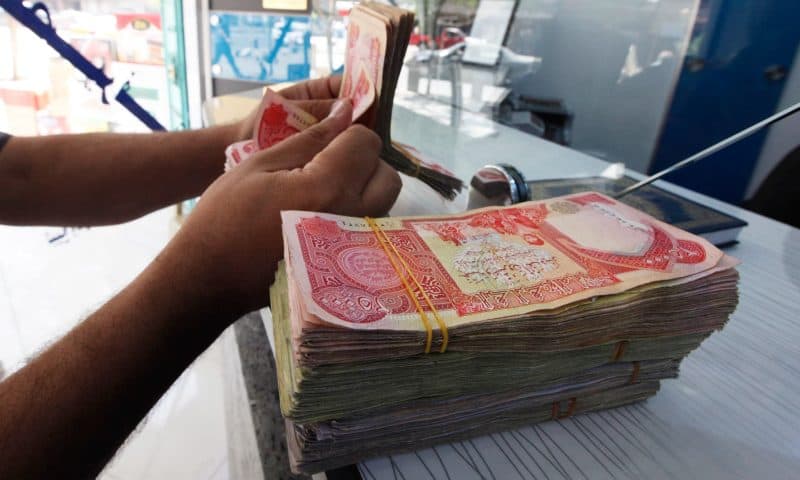Iraq’s currency has halted its nosedive after a meeting between the Iraqi Central Bank head and a top U.S. Treasury official
BAGHDAD — Iraq’s currency ended its nosedive after a meeting between the Iraqi Central Bank head and a top U.S. Treasury official.
Under Secretary of the Treasury for terrorism and financial intelligence Brian E. Nelson said in a statement Saturday that he had met with Central Bank of Iraq Governor Ali al-Allaq in Istanbul the day before “to discuss banking sector reforms and a mutual commitment to anti-money laundering and countering the financing of terrorism.”
He praised Iraq’s “steadfast dedication” to improving its compliance with international standards and “and offered continued cooperation in modernizing the banking sector,” the statement said.
Measures taken by the United States in recent months to stamp out money laundering and the channeling of dollars to Iran and Syria from Iraq have severely restricted Iraq’s access to hard currency.
Since the U.S. invasion of Iraq in 2003, Iraq’s foreign currency reserves have been housed at the United States’ Federal Reserve, giving the Americans significant control over Iraq’s supply of dollars.
The Iraqi dinar slipped to around 1,750 to the dollar at street exchanges in some parts of the country on Thursday, compared to the official rate of 1,460 dinars for $1. The devaluation has prompted protests and fears of inflation.
The currency began to halt its slide after Iraq’s Central Bank said in a statement Friday evening that the Treasury had “expressed its readiness for the necessary flexibility to achieve common goals.” As of Saturday, the dinar was trading at around 1,600 dinars to the dollar.
A delegation of Iraqi officials is set to travel to Washington next Friday.

